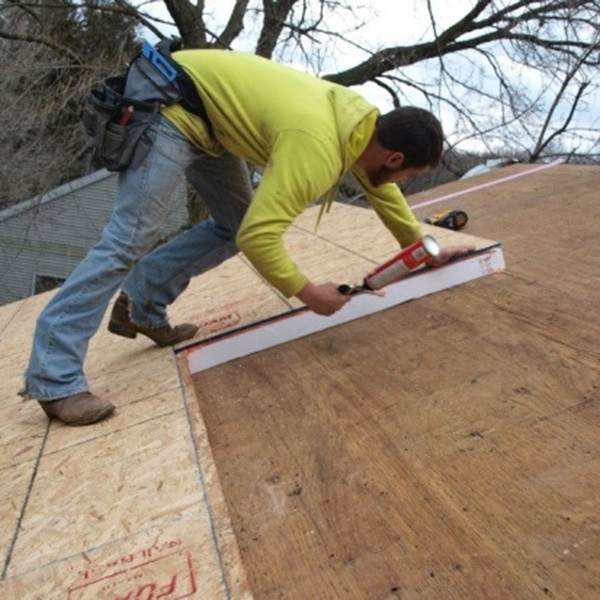This happens due to trapped damp air often in the late fall or early winter.
Attic nail stains.
After several years of this there may be.
If enough of it forms and settles on the attic floor it will eventually migrate down to your ceiling.
Even in warm or dry weather you often will see stains around roofing nails penetrating the roof sheathing or condensate drip spots on the attic flooring or insulation left photo below.
This is sure evidence of a condensation problem.
Looks like either condensation encouraged mold growth or less likely the coating on the roofing nails migrating into the wood.
Click photo for larger image.
In the summer rust can be seen on the tip of the nails and sheathing around the nail protrusion.
This is caused by moisture condensing on the roofing nails and dropping to the surface below.
During the winter moisture is present if there is frost on the nails.
If it goes away it is mold.
In a reasonably well insulated and vented attic stains may appear due to condensation.
For over 80 years california paints has been a leading innovator in the paint industry.
When this humid relatively.
Stains and rust around protruding nails are strong evidence that there is a high level of moisture in the cavity surfaces.
Also notice the condensation stains at the shingle nail more evidence of a history of attic moisture which was a factor in this mold growth.
This latter phenomenon occurs when the house is too humid and the warm moist air seeps into the attic where it condenses and freezes on cold attic areas.
This usually occurs on the underside of the roofing structure.
Random stains on your ceiling with no evidence of roof leakage usually mean that you ve got a condensation problem in your attic.
The mold shown in the attic photographed above was identified as aspergillus sp.
One good way to check if this is going on is to inspect the nail heads in your attic.

